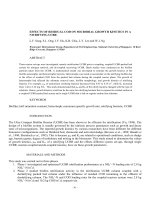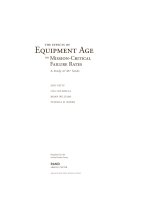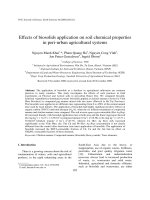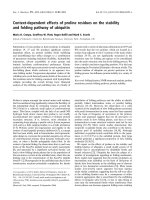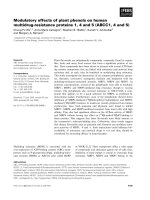Effects of feeding rates on juvenile babylonia
Bạn đang xem bản rút gọn của tài liệu. Xem và tải ngay bản đầy đủ của tài liệu tại đây (109.87 KB, 1 trang )
Chaitanawisuti, N., Kritsanapuntu, A., Natsukari, Y., & Kathinmai, S. (2001).
Effects of feeding rates on the growth, survival and feed utilization of hatchery‐
reared juvenile spotted babylon Babylonia areolata Link 1807 in a flowthrough
seawater system. Aquaculture research, 32(9), 689-692.
Abstract
The effects of feeding levels on the growth, survival and feed utilization of
hatchery‐reared juvenile Babylonia areolata Link 1807 were assessed at four daily
rations of 3%, 5%, 10% and 15% of body weight. Three duplicated groups of
juveniles (mean initial body weight 0.26
± 0.3 g) were stocked into indoor
rearing tanks supplied with a flowthrough system of ambient natural seawater for
150 days. Growth in body weight differed significantly (P
<
0.05) among the
various feeding levels. Final body weight of individual snails increased with
increased feeding ration at a particular ration level. Meanwhile, increasing the daily
ration to 10% and 15% significantly improved growth and feed utilization
efficiency. The food conversion ratios (FCRs) for the 3% and 5% feeding levels
were significantly lower than those for the other feeding levels. Final survival was
best at feeding levels of 10% and 15% of body weight, ranging between 96.9% and
97.3%, but was very poor at the 3% and 5% feeding levels, ranging from only
49.5% to 54.8%.
